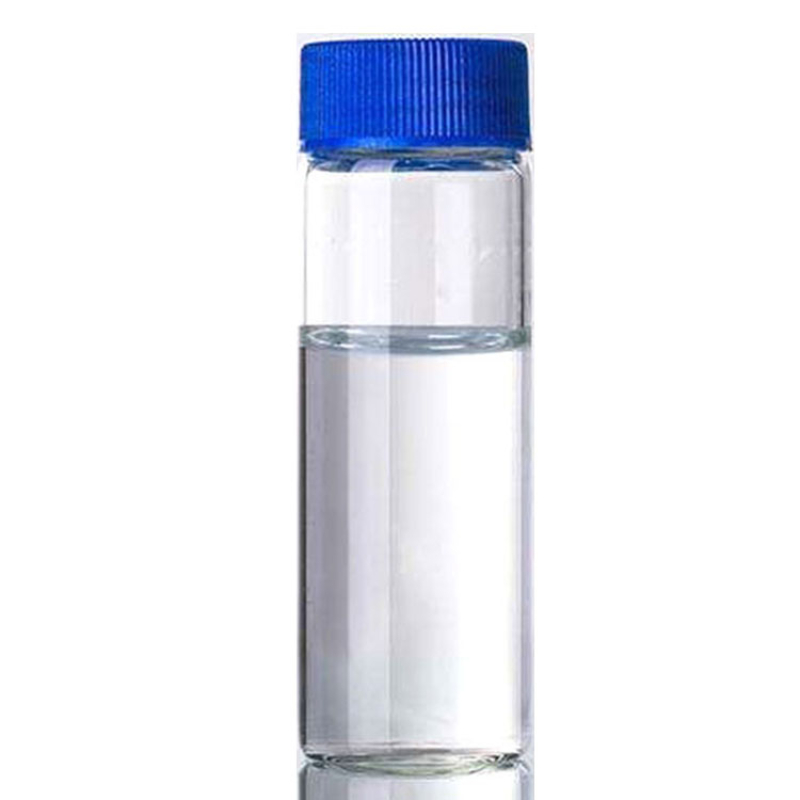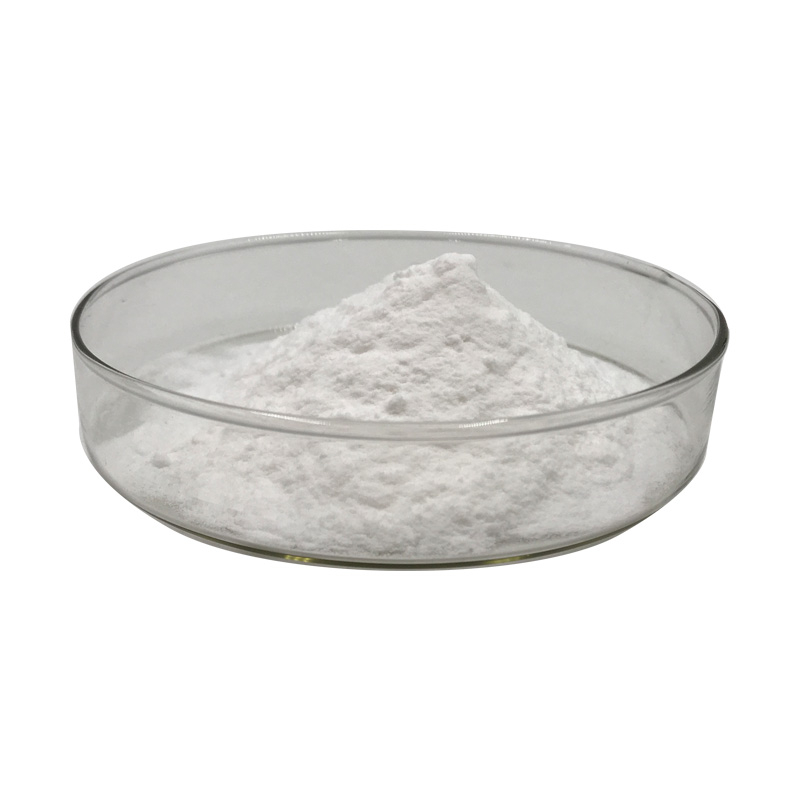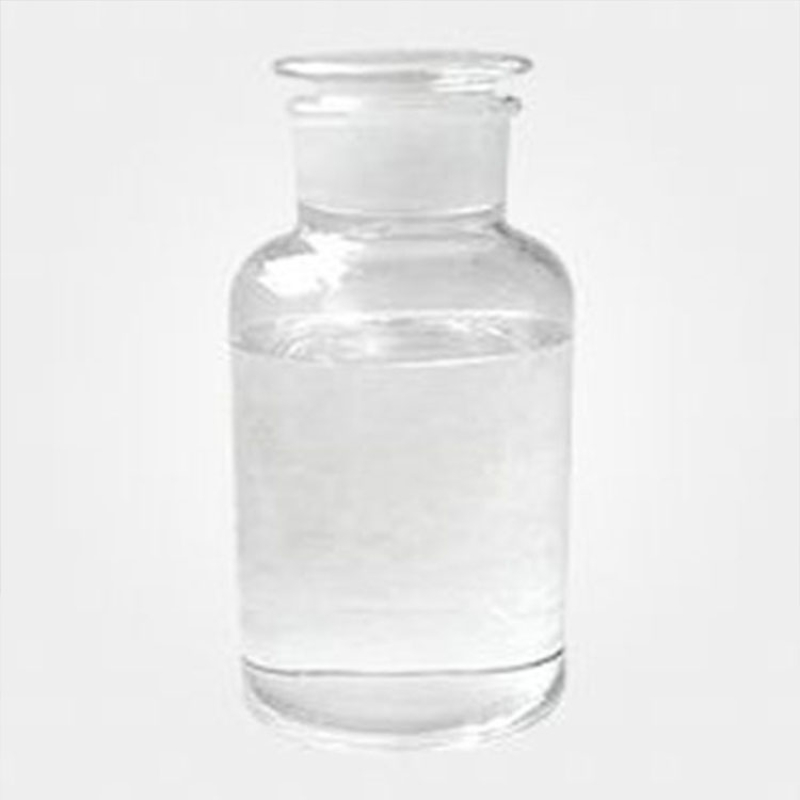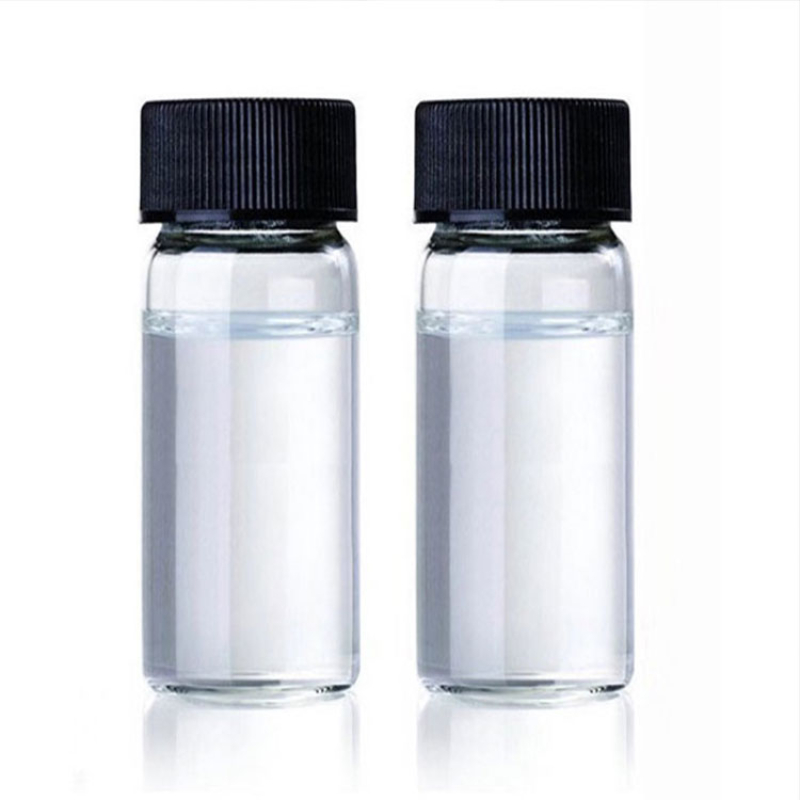Products Description of Pentaerythrityl Tetraisostearate CAS#62125-22-8Pentaerythritol tetraisostearate is a high molecular weight liquid oil with a molecular formula of C77H148O8 and a molecular weight of 1201.99. It is insoluble in water.Pentaerythityl tetraisostearate Chemical PropertiesOdorat 100.00?%. blandLogP32.456 (est)EPA Substance Registry SystemPentaerythritol tetraisostearate (62125-22-8)Product Application of Pentaerythrityl Tetraisostearate CAS#62125-22-8It provides a moist and smooth feel to the hair and a very moist and non-greasy feel to the skin.
Contact Now
Products Description of 1-Butylpyrrolidin-2-oneCAS#3470-98-2Colorless liquid1-Butylpyrrolidin-2-one Chemical PropertiesBoiling point 137 °C / 28mmHgdensity 0,96 g/cm3vapor pressure 13Pa at 25℃refractive index 1.4640 to 1.4660storage temp. under inert gas (nitrogen or Argon) at 2-8°Csolubility Chloroform (Slightly)pka-0.41±0.20(Predicted)form Oilcolor ColourlessWater Solubility 1000g/L at 20℃InChIInChI=1S/C8H15NO/c1-2-3-6-9-7-4-5-8(9)10/h2-7H2,1H3InChIKeyBNXZHVUCNYMNOS-UHFFFAOYSA-NSMILESN1(CCCC)CCCC1=OLogP1.265 at 20℃CAS DataBase Reference3470-9
Contact Now
Products Description of 2-Imidazolidone CAS#120-93-42-Imidazolidinone is an organic compound with the molecular formula C3H6N2O.
Contact Now
Products Description of 1,1,1-TrimethoxypentaneCAS#13820-09-2Boiling point 165℃.1,1,1-Trimethoxypentane Chemical PropertiesBoiling point 164-166 °C (lit.)density 0.941 g/mL at 25 °C (lit.)refractive index 1.408-1.41Fp 41 °Cstorage temp. Flammables areasolubility Chloroform (Slightly), DMSO, Methanol (Slightly)form clear liquidcolor Colorless to Almost colorlessSensitive Moisture SensitiveMerck 14,9717BRN 1739200Stability:Unstable in acidic solution, Unstable In Acidic SolutionCAS DataBase Reference13820-09-2(CAS DataBase Reference)NIS
Contact Now
Products Description of 2,5-Furandicarboxylic acid CAS#3238-40-22,5-Furandicarboxylic acid is a derivative of furan. This organic compound was first obtained by Fittig and Heinzelmann in 1876. 2,5-Furandicarboxylic acid is a chemical intermediate with strong sensitivity and good stability. It is soluble in water under alkaline conditions and is a white powdery solid under acidic conditions. It is an important monomer for the preparation of corrosion-resistant plastics.
Contact Now
Methylammonium bromide CAS#6876-37-5Methylammonium bromide Chemical PropertiesMelting point 248.0 to 253.0 °CWater Solubility Soluble in waterform powdercolor White to Almost whiteInChIInChI=1S/CH5N.BrH/c1-2;/h2H2,1H3;1HInChIKeyISWNAMNOYHCTSB-UHFFFAOYSA-NSMILES[NH3+]C.[Br-]Safety InformationHazard Codes XnRisk Statements 22-36/37/38Safety Statements 26-36/37/39-46WGK Germany 3HS Code 29239000Factory and Equipment ShowFast delivery timeInventory 2-3 working days New production 7-10 working days
Contact Now
Products Description of DecamethylcyclopentasiloxaneCAS#541-02-6Decamethylcyclopentasiloxane (cyclopentasiloxane) is a colorless, odorless, volatile liquid cyclic siloxane. It is safe and environmentally friendly and has been widely used in health and beauty products such as deodorants, antiperspirants, cosmetics, shampoos, body lotions, etc.
Contact Now
Products Description of 6-Methyluracil CAS#626-48-26-Methyluracil is a colorless crystal. The melting point is 311-312℃, and it has also been reported to be 270-280℃ (decomposition). It is soluble in water, hot ethanol and alkaline solution, and slightly soluble in ether.
Contact Now
Products Description of Panthenol CAS#16485-10-2Provitamin B5 is a white crystalline hygroscopic powder.
Contact Now
Products Description of 2-Mercaptobenzimidazole CAS#583-39-1Antioxidant MBI, 2-mercaptobenzimidazole, is a thiol-substituted nitrogen heterocyclic compound and an important class of pharmaceutical intermediates, widely used in medicine, pesticides, chemicals and other fields.
Contact Now
Products Description of Cellulose diacetate CAS#9035-69-2White powderCellulose diacetate Chemical PropertiesEPA Substance Registry SystemCellulose, diacetate (9035-69-2)Factory and Equipment ShowFast delivery timeInventory 2-3 working days New production 7-10 working days
Contact Now
(2-hydroxytrimethylene)bis(trimethylammonium) dichloride Chemical PropertiesMelting point 256-257 °C (decomp)Factory and Equipment ShowFast delivery timeInventory 2-3 working days New production 7-10 working days
Contact Now
Products Description of Indigo CAS#482-89-3Indigo is a vat dye with a history of more than 3,000 years. Xun Kuang's famous saying of the Warring States Period, "Blue, comes from blue and is better than blue" originated from the indigo dyeing technology at that time. "Qing" here refers to cyan, and "blue" refers to the blue grass from which indigo is made.
Contact Now
Products Description of 2-Acrylamide-2-methylpropanesulfonic acid CAS#15214-89-82-Acrylamido-2-methylpropanesulfonic acid (AMPS) is a water-soluble sulfonic acid group with strong anionic properties, which makes it salt-resistant, high-temperature-resistant, dye-affinity, conductive, ion-exchangeable and highly tolerant to divalent cations; the amide group makes it have good hydrolysis stability, acid and alkali resistance and thermal stability; and the active double bond makes it have addition polymerization properties, and it can produce copolymers with a variety of hydrocarbon monomers
Contact Now
Products Description of Hexafluorobisphenol A CAS#1478-61-1Bisphenol AF is also known as hexafluorobisphenol A, 2,2-bis(4-hydroxyphenyl)hexafluoropropane, 2,2-bis(4-hydroxyphenyl)hexafluoropropane, etc., referred to as BPAF. It is slightly soluble in carbon tetrachloride, hardly soluble in water, and easily soluble in organic solvents such as ethanol, acetone, ether, toluene and strong alkali solutions.
Contact Now
Products Description of LDAO CAS#1643-20-5This product is colorless or light yellow transparent liquid, with a relative density of 0.98 at 20°C. Easily soluble in water and polar organic solvents, slightly soluble in non-polar organic solvents and showing non-ionic or cationic properties in aqueous solutions. When the pH value is <7, it is cationic. Amine oxide itself is an excellent detergent and can produce stable and rich foam.
Contact Now
Orthophosphoric Acid CAS#7664-38-2Phosphoric Acid, with the chemical formula H₃PO₄ and CAS number 7664-38-2, is a versatile inorganic acid that plays a crucial role in a multitude of industries.
Contact Now
Aluminum Oxide CAS#1344-28-1 The oxide of aluminum is Al2O3. The natural crystalline mineral is called corundum, but the synthetic crystals used for abrasives are designated usually as aluminum oxide or marketed under trade names. For other uses and as a powder, it is generally called alumina.
Contact Now
Products Description of 4-Methylmorpholine N-oxide CAS#7529-22-8N-methylmorpholine oxide (NMMO) solvent is a special excellent solvent with extremely strong solubility for cellulose. It is a crystalline solid or liquid at room temperature, non-toxic, weakly alkaline, and highly hygroscopic. Each molecule can combine with multiple water molecules. It is easy to produce a color change reaction at 120°C, and an overheating reaction at 175°C and is easy to gasify and decompose.
Contact Now
Products Description of Chromium(VI) oxide CAS#1333-82-0Chromium trioxide is an inorganic compound with the chemical formula CrO3. It is a dark red or dark purple crystalline powder. It is soluble in water, sulfuric acid, nitric acid, ethanol, ether, acetic acid, and acetone. It is mainly used in electroplating industry, pharmaceutical industry, printing industry, tanning and fabric mordant dyeing.On October 27, 2017, the World Health Organization's International Agency for Research on Cancer published a preliminary list of carcinogens for reference.
Contact Now
Products Description of Bismuth trioxide CAS#1304-76-3Yellow monoclinic crystals. Soluble in acid, insoluble in water and alkali. Can be reduced by carbon and hydrogen. Made by heating and decomposing bismuth nitrate. Used to make metallic bismuth, catalysts and bismuth oxide superconductors.Bismuth oxide is also known as "bismuth trioxide". Pure products include α-type, β-type and δ-type. α-type is yellow monoclinic crystal with a relative density of 8.9 and a melting point of 825℃. It is soluble in acid but insoluble in water and alkali.
Contact Now
Products Description of Tetrahydropyran CAS#142-68-7Tetrahydropyran, also known as oxadiazine, is a six-membered oxygen-containing saturated heterocyclic ring. It is a colorless, flammable liquid at room temperature with a special smell. It is miscible in water, ethanol, ether, and other organic solvents. It generates explosive organic peroxides under light. It is prepared by hydrogenation of dihydropyran in the presence of Raney nickel or reaction of 5-dibromopentane and water in the presence of zinc oxide.
Contact Now
Products Description of Citric Acid Monohydrate CAS#5949-29-1 Citric acid monohydrate is an organic compound with the chemical formula C6H10O8 and a molecular weight of 210.139.
Contact Now
Products Description of 1,3,5-Benzenetricarboxylic acid chlorideCAS#4422-95-1White powder1,3,5-Benzenetricarboxylic acid chloride Chemical PropertiesMelting point 32-38 °C (lit.)Boiling point 180 °C/16 mmHg (lit.)density 1.487 g/mL at 25 °C (lit.)refractive index 1.5945-1.5965Fp >230 °Fstorage temp. Store below +30°C.solubility decomposesform Liquidcolor Clear colorless to slightly yellowWater Solubility decomposesSensitive Moisture SensitiveBRN 2940936CAS DataBase Reference4422-95-1(CAS DataBase Reference)NIST Chemistry
Contact Now

































